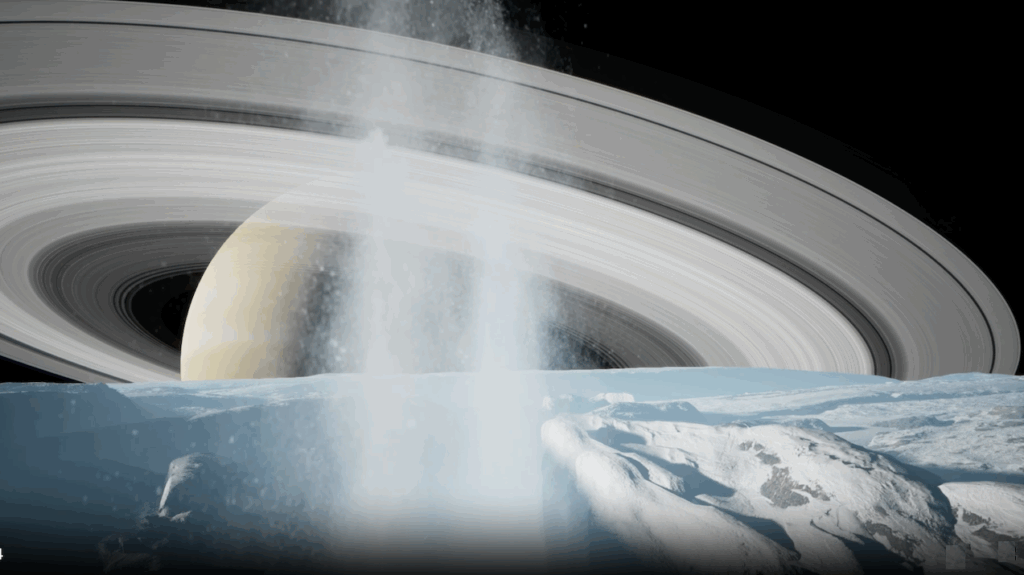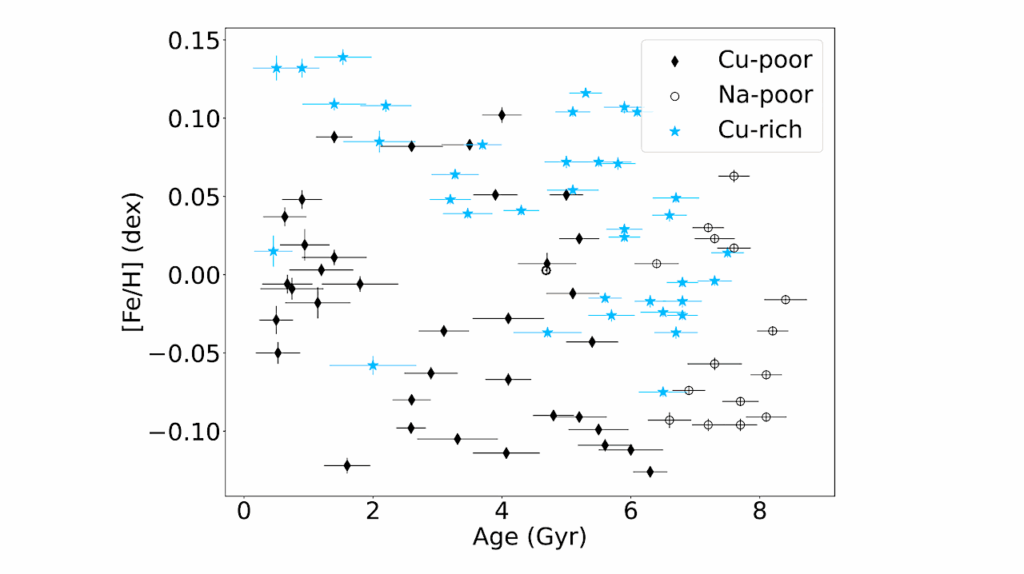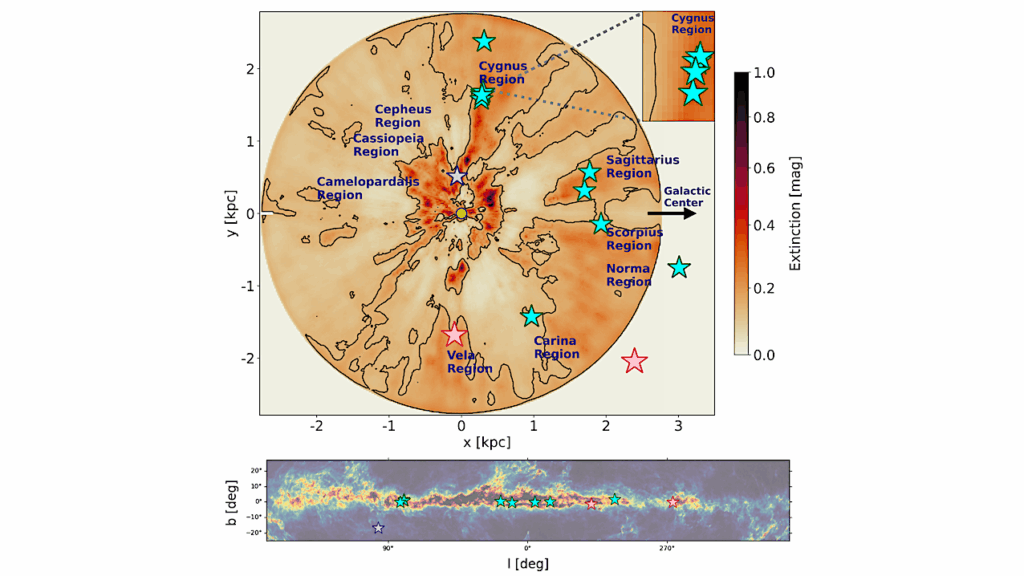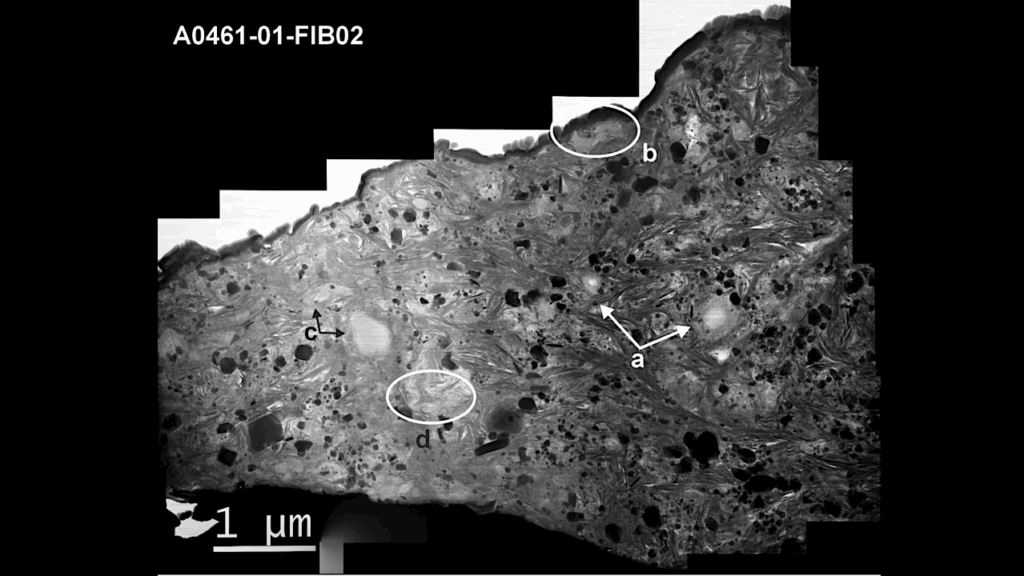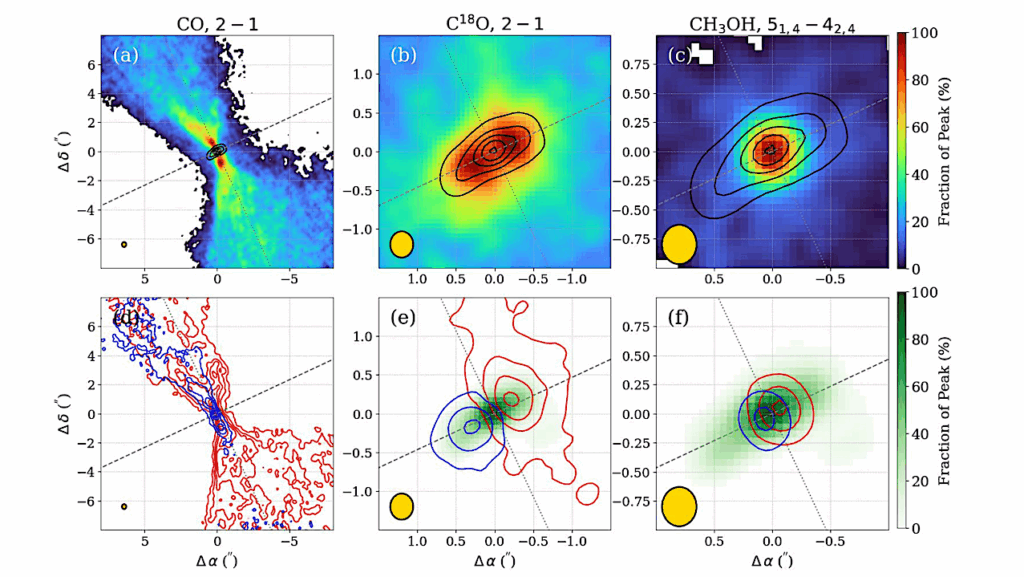Impact of Ice Growth on the Physical and Chemical Properties of Dense Cloud Cores
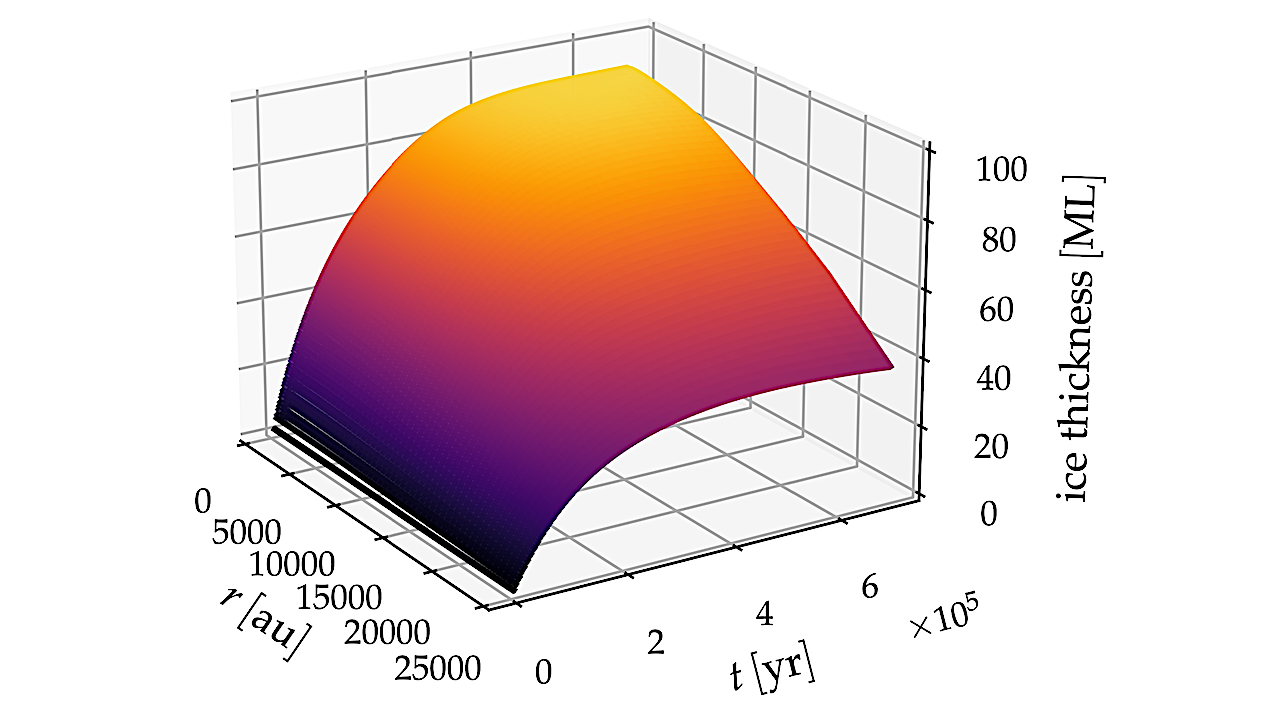
We investigated the effect of time-dependent ice growth on dust grains on the opacity and hence on the dust temperature in a collapsing molecular cloud core, with the aim of quantifying the effect of the dust temperature variations on ice abundances as well as the evolution of the collapse.
We employed a one-dimensional collapse model that self-consistently and time-dependently combines hydrodynamics with chemical and radiative transfer simulations. The dust opacity was updated on-the-fly based on the ice growth as a function of location in the core. The results of the fully dynamical model were compared against simulations assuming fixed ice thickness.
We found that the ice thickness increases fast and reaches a saturation value of approximately 90 monolayers in the central core (volume density ∼104cm−3), and several tens of monolayers at a volume density of ∼103cm−3, after only a few 105yr of evolution. The results thus exclude the adoption of thin (∼10 monolayer) ices in molecular cloud simulations except at very short timescales.
The differences in abundances and dust temperature between the fully dynamic simulation and those with fixed dust opacity are small; abundances change between the solutions generally within a factor of two. The assumptions on the dust opacity do have an effect on the collapse dynamics through the influence of the photoelectric effect on the gas temperature, and the simulations take a different time to reach a common central density.
In conclusion, carrying out chemical simulations using a dust temperature corresponding to a fixed opacity seems to be a good approximation. Still, although at least in the present case its effect on the overall results is limited – as long as the grains are monodisperse – ice growth should be considered to obtain the most accurate representation of the collapse dynamics.
O. Sipilä, P. Caselli, M. Juvela
Comments: Accepted for publication in A&A; abstract abridged to meet arXiv requirements
Subjects: Astrophysics of Galaxies (astro-ph.GA)
Cite as: arXiv:2408.17202 [astro-ph.GA] (or arXiv:2408.17202v1 [astro-ph.GA] for this version)
https://doi.org/10.48550/arXiv.2408.17202
Focus to learn more
Submission history
From: Olli Sipilä
[v1] Fri, 30 Aug 2024 11:01:06 UTC (4,009 KB)
https://arxiv.org/abs/2408.17202
Astrobiology, astrochemistry,


